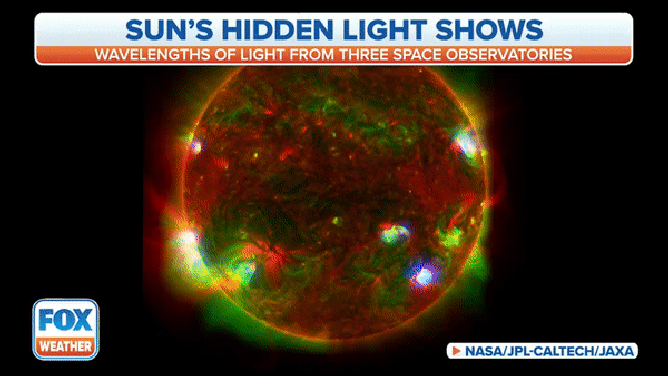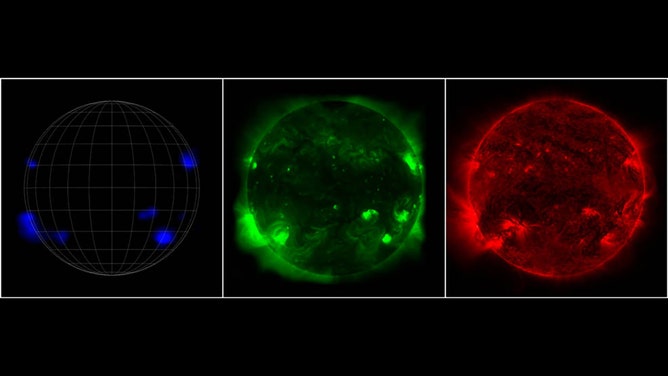NASA telescope reveals hidden light shows on sun
A kaleidoscope of color created by the hot glowing ball of hydrogen and helium at the center of our solar system was recently captured by a NASA telescope.
Vitamin D: Why you need the sun
As the sunshines out on you, learn why you need Vitamin D and why it protects you from the sun's rays
At 4.5 billion years old, the sun is still showing off for scientists.
A kaleidoscope of color created by the hot glowing ball of hydrogen and helium at the center of our solar system was recently captured by a NASA telescope.
A mosaic of 25 images was taken last June by the space agency's Nuclear Spectroscopic Telescope Array (NuSTAR). It shows high-energy X-rays emitted by the hottest material in the sun’s atmosphere.
SAY CHEESE! SUN SHOWCASES SMILEY APPEARANCE

Wavelengths of light from three space observatories are overlapped to provide a unique view of the sun in the image at left. The high-energy X-ray light detected by one of those observatories, NASA’s NuSTAR, is seen isolated at right; a grid was added to indicate the sun’s surface.
(NASA/JPL-Caltech/JAXA)
NuSTAR typically studies black holes and collapsed stars located outside our solar system but now provides astronomers with insights about the sun.
In the photo below, NASA’s NuSTAR sees high-energy X-rays shown in blue; the Japanese Aerospace Exploration Agency’s Hinode mission sees lower-energy X-rays shown in green; and NASA’s Solar Dynamics Observatory sees ultraviolet light shown in red.
WATCH: VIDEO SHOWS DISTANT WORLDS ORBITING A STAR 133 LIGHT-YEARS AWAY

The sun appears different depending on who’s looking.
(NASA/JPL-Caltech/JAXA)
When the three wavelengths of light are overlaid on top of one another, it provides a unique view of the sun.
"NuSTAR’s view could help scientists solve one of the biggest mysteries about our nearest star: why the sun’s outer atmosphere, called the corona, reaches more than a million degrees – at least 100 times hotter than its surface," NASA said Thursday.
The mystery has puzzled scientists because the sun’s heat originates in its core and travels outward.
The source of the corona’s heat could be small eruptions in the sun’s atmosphere called nanoflares, NASA said.
The sun is located about 93 million miles from Earth, and without its energy, life as we know it could not exist on our home planet.
